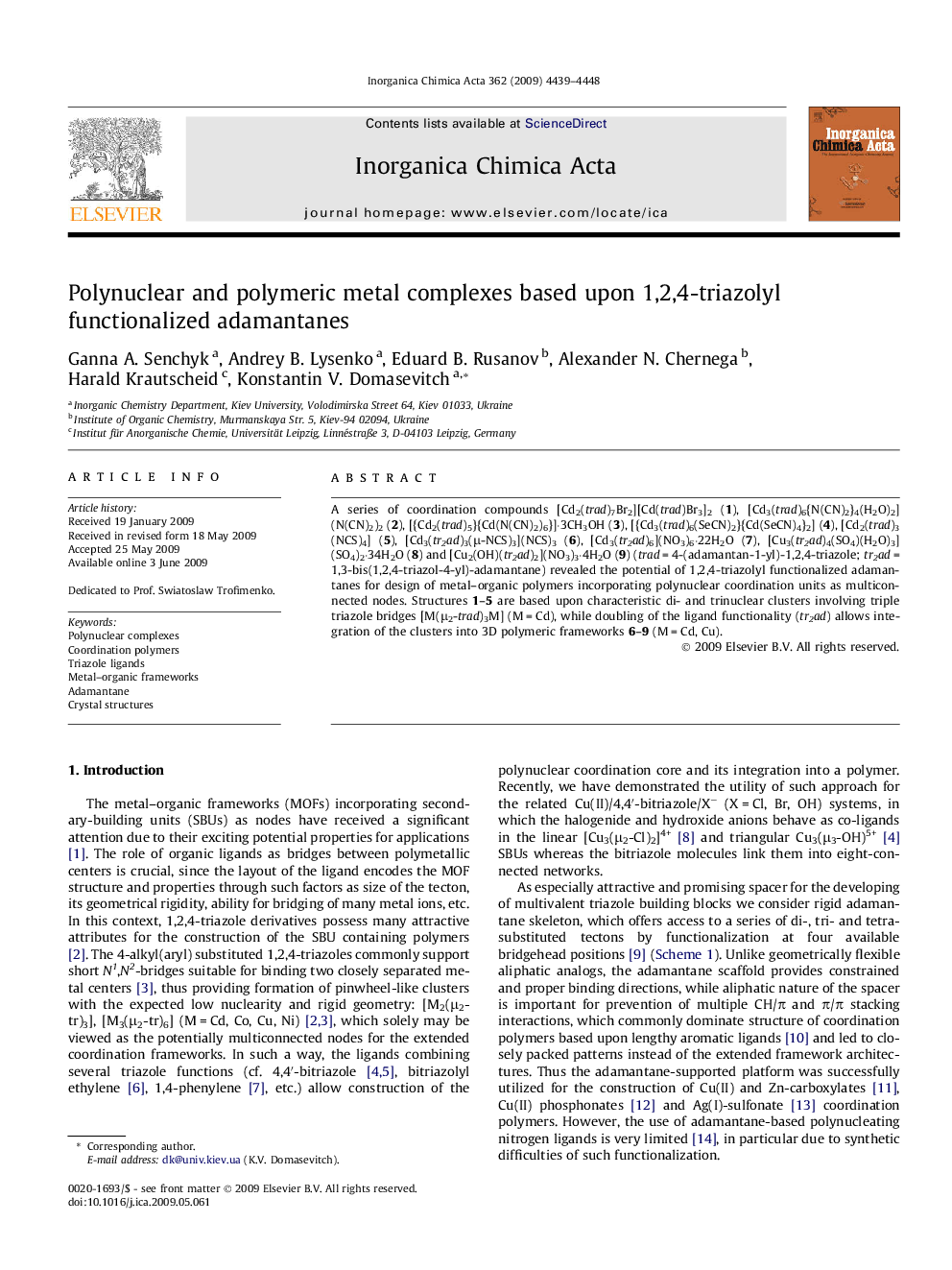| Article ID | Journal | Published Year | Pages | File Type |
|---|---|---|---|---|
| 1309560 | Inorganica Chimica Acta | 2009 | 10 Pages |
A series of coordination compounds [Cd2(trad)7Br2][Cd(trad)Br3]2 (1), [Cd3(trad)6{N(CN)2}4(H2O)2](N(CN)2)2 (2), [{Cd2(trad)5}{Cd(N(CN)2)6}]·3CH3OH (3), [{Cd3(trad)6(SeCN)2}{Cd(SeCN)4}2] (4), [Cd2(trad)3(NCS)4] (5), [Cd3(tr2ad)3(μ-NCS)3](NCS)3 (6), [Cd3(tr2ad)6](NO3)6·22H2O (7), [Cu3(tr2ad)4(SO4)(H2O)3](SO4)2·34H2O (8) and [Cu2(OH)(tr2ad)2](NO3)3·4H2O (9) (trad = 4-(adamantan-1-yl)-1,2,4-triazole; tr2ad = 1,3-bis(1,2,4-triazol-4-yl)-adamantane) revealed the potential of 1,2,4-triazolyl functionalized adamantanes for design of metal–organic polymers incorporating polynuclear coordination units as multiconnected nodes. Structures 1–5 are based upon characteristic di- and trinuclear clusters involving triple triazole bridges [M(μ2-trad)3M] (M = Cd), while doubling of the ligand functionality (tr2ad) allows integration of the clusters into 3D polymeric frameworks 6–9 (M = Cd, Cu).
Graphical abstractA series of Cd and Cu(II) complexes involving mono- and bifunctional 1,2,4-triazol-4-yl substituted adamantane ligands reveal formation of bi- and trinuclear coordination units and their integration into the structures of coordination polymers by geometrically rigid adamantane-1,3-diyl spacers.Figure optionsDownload full-size imageDownload as PowerPoint slide
